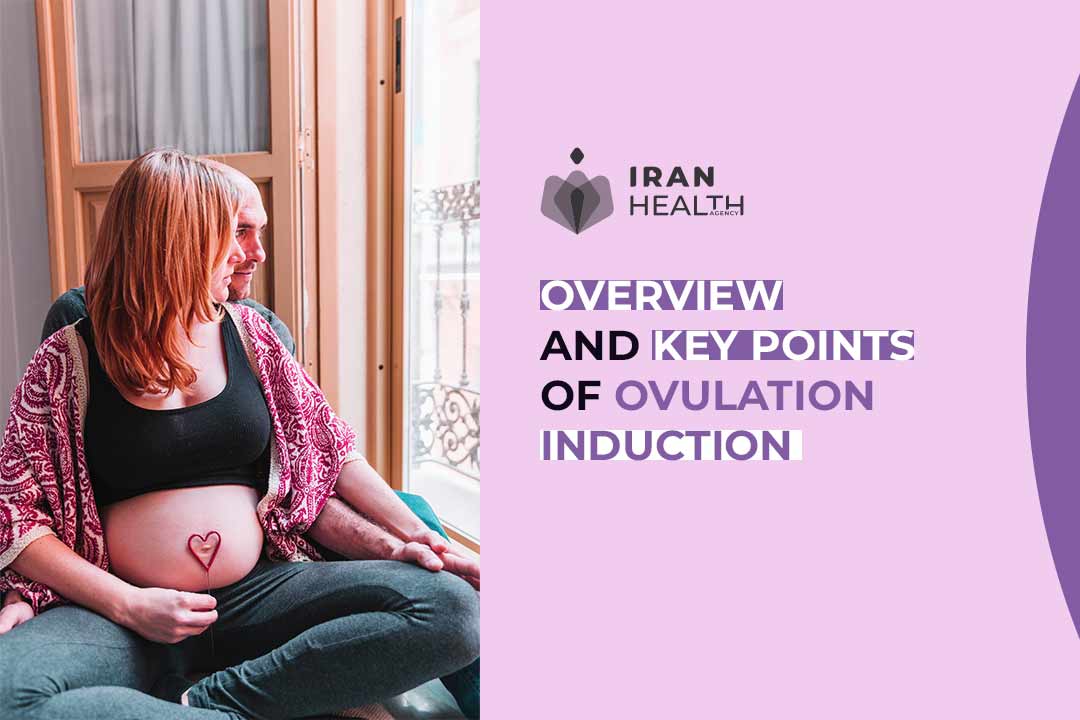Ovulation Induction in Iran
Overview and Key Points of Ovulation Induction (OI):
The goal of Ovulation Induction (OI), also called Controlled Ovarian Hyperstimulation (COH), is to make the ovaries make more eggs so that the chances of getting pregnant are higher. Sometimes, a procedure called intrauterine insemination (IUI) is used in conjunction with ovulation induction to achieve pregnancy.
Many people who have trouble getting pregnant are encouraged to try this treatment. It works incredibly well for women who don’t ovulate regularly because of things like stress, weight changes, problems with the pituitary or thyroid gland, high prolactin levels, or Polycystic Ovary Syndrome (PCOS).

As a starting point, let’s break the topic down to the most important sections that should be considered during the fertility decision-making process.
1. Technique
During the OI process, fertility drugs are given by mouth or through an injection to help the egg grow and start ovulation. Using pelvic ultrasound scans and blood tests to measure hormone levels, doctors can monitor how the eggs develop and help find the best time for ovulation. OncoIUI and OncoIVF are examples of Assisted Reproductive Technology (ART) treatments that can be used together.
2. Dangers and downsides (side effects)
Ovarian Hyperstimulation Syndrome (OHSS) is one of the main risks of OI. It can lead to signs like swollen ovaries, abdominal pain, and fluid buildup in the abdomen. In very few cases, OHSS can be very dangerous to life 5. Other possible side effects are feeling sick, throwing up, having stomach pain, and bloating. Fertility drugs, especially injectable ones, can also raise the risk of having more than one baby, which comes with its risks.
All the side effects of OI are here!
Side effects of OI medications include:
- Mood changes
- Hot flashes
- Vaginal dryness
- Irregular menses
- Decreased bone density
- Arthralgias/myalgias
- Loss of libido
- Dyspareunia
- Bloating
- Nausea
- Headaches
- Loss of breath
- Weight gain
- Tenderness in the pelvic region
3. The rate of success (How successful is OI?)
Ovulation induction can be successful in 70–80% of women, with cumulative pregnancy rates of 70–75% over 6–9 cycles of treatment. Many factors can affect the success rate of OI, such as the reason for infertility, the medication and dosage used, the patient’s age, body mass index (BMI), and general fertility.
Also, medications that start ovulation have a high success rate for women with PCOS. For example, Clomid® or letrozole have been shown to start ovulation in 60–73% of cycles.
IUI with Ovulation Induction (OI) vs. IVF
Here’s a table comparing IUI with Ovulation Induction (OI) and IVF:
Feature | IUI with OI | IVF |
Fertilization Location | Internal (inside the woman’s uterus) | External (in a laboratory dish) |
Procedure | Sperm is washed and inserted directly into the uterus around ovulation. | Eggs are retrieved from the ovaries, fertilized with sperm in a lab dish, and embryos are transferred to the uterus. |
Involvement of Medications | May use fertility medications to stimulate ovulation (OI). | Requires fertility medications to stimulate egg production and ovulation control. |
Success Rates | Lower success rates (around 10-20%) | Higher success rates (around 30-40%) |
Cost | Less expensive | More expensive |
Invasiveness | Less invasive (outpatient procedure) | More invasive (surgical procedures for egg retrieval) |
Who it’s for | Unexplained infertility, mild male-factor infertility, same-sex female couples with donor sperm | Blocked fallopian tubes, severe male-factor infertility, female-factor infertility (e.g., poor egg quality), older women |
Additional consideration:
- Because it is less invasive and costs less, IUI with OI is often suggested as the first option for infertility.
- Using methods for washing sperm and timing the procedure right around ovulation can help IUI with OI work better.
- IVF is more complex and costs more, but it has a higher success rate for many couples who are having trouble getting pregnant.
The End
For many couples, OI is the first step in treating infertility. It is a non-invasive and relatively cheap choice compared to more complicated treatments like IVF. However, it is imperative for patients to fully understand the process, medicines, possible risks, and success rates of OI. Medical workers can monitor patients carefully and create personalized treatment plans to lower risks and improve outcomes.
It is essential to talk to a fertility expert to figure out the best way to treat your specific problem.
For better results, consult with an expert!
We Know infertility treatment can be stressful and costly with so many concerns, so It is essential to talk to a fertility expert to figure out the best way to treat your specific problem! We can book free consultations with the best IVF clinic (their expert) in Iran to get personal information and estimate the cost of infertility treatment.
Where to get help for Ovulation Induction?
IranHealthAgency: All-in-one destination for doctors’ consultations for Ovulation Induction
We can assist you in arranging consultations with accredited physicians in Iran who specialize in various medical fields. We can also help you schedule the required medical tests. Moreover, we can facilitate money transfers and payments to healthcare providers, if necessary. Finally, we can help you submit verification requests and documentation to obtain Ovulation Induction approval. Please let me know how I can be of assistance.
For more information Contact us: